America isn’t just home to amber waves of grain — it’s crawling, slithering, swimming, and soaring with things that can kill you.
From the quiet sting of a jellyfish to the bone-crushing bite of a grizzly, danger in the U.S. wears many faces. Some hide in plain sight. Others strike when you least expect it. But all 18 of the animals on this list share one thing: they don’t mess around.
These aren’t cartoon villains or horror movie props — they’re real, and they’re out there. In the forest. In the water. Maybe even in your backyard.
So before you take that hike, dive into that lake, or shake off that “harmless” spider — read this list. These are the lethal legends of American wildlife, and they demand your respect. Or better yet… your distance.
American Alligator
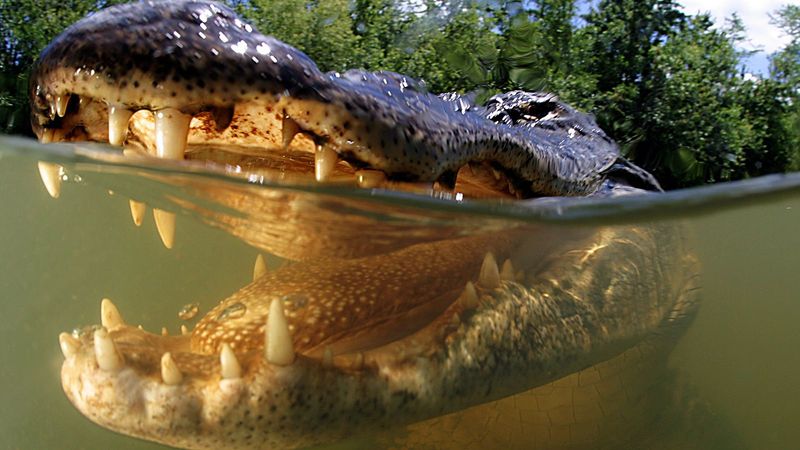
Lurking beneath the waters of the southeastern U.S., the American Alligator is a formidable predator. With a bite force that can crush bones, it demands respect.
This reptile is often seen basking on riverbanks or stealthily swimming, barely visible except for its eyes and nostrils. Though attacks on humans are rare, the alligator’s sheer power and territorial nature make it a creature you wouldn’t want to provoke.
Fun fact: Alligators can live up to 50 years in the wild, adapting to both fresh and brackish waters.
Grizzly Bear
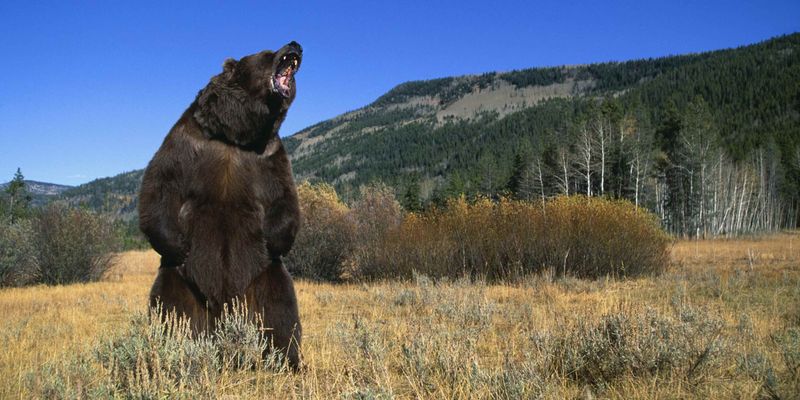
In the expansive forests and plains of the U.S., the Grizzly Bear reigns supreme. With its towering presence, the bear is as awe-inspiring as it is dangerous.
Grizzlies possess a keen sense of smell and are fiercely protective of their cubs. Surprisingly, these bears can run up to 35 mph, making escape a challenging endeavor.
Did you know? Grizzly Bears have a distinctive hump on their shoulders, which is a muscle mass aiding in digging. Their strength and unpredictability make them animals to admire from a distance.
Copperhead Snake
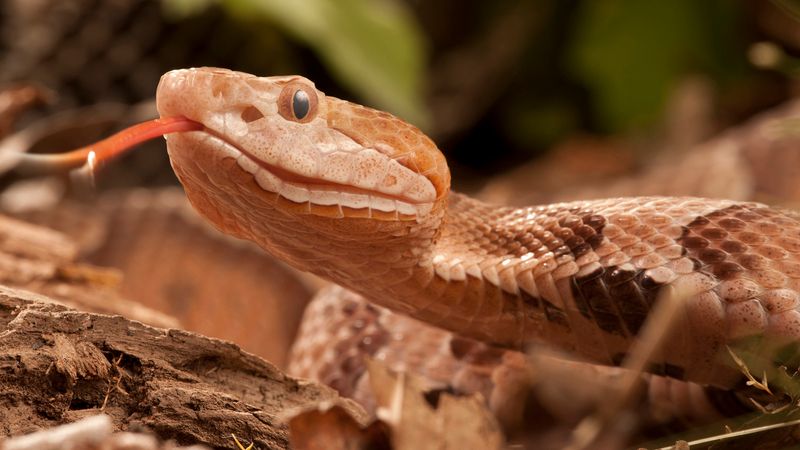
The Copperhead Snake, with its distinctive copper-colored head, blends seamlessly into the leaf litter of eastern and central U.S. forests. This camouflage is its primary defense.
Although not the most venomous, its bite can be painful and necessitates medical attention. Copperheads are known for their ‘freeze’ response when threatened, relying on their cryptic appearance.
Interesting fact: They are pit vipers, using heat-sensing pits to detect prey. Their ability to remain unseen until it’s too late underscores their potential threat.
Black Widow Spider

With its glossy black body and iconic red hourglass marking, the Black Widow Spider is a notorious symbol of danger. Found in dark, undisturbed areas, it spins webs that are as lethal as its venom.
Despite their fearsome reputation, bites are rarely fatal but can cause severe pain and muscle cramps. The female, often larger and more aggressive, is the one to watch out for.
Curious note: The Black Widow’s venom is 15 times more potent than a rattlesnake’s, yet fatalities are rare due to medical advancements.
Brown Recluse Spider

The Brown Recluse Spider, with its violin-shaped marking, inhabits the quiet corners of homes and sheds. Its bite is infamous for causing necrotic lesions.
These spiders are non-aggressive, biting only when pressed against the skin. Nonetheless, seeking medical attention is wise if bitten.
Did you know? They are nicknamed ‘fiddlebacks’ due to their unique marking. Their secretive nature and potentially serious bites make them a hidden hazard in many households.
Eastern Diamondback Rattlesnake
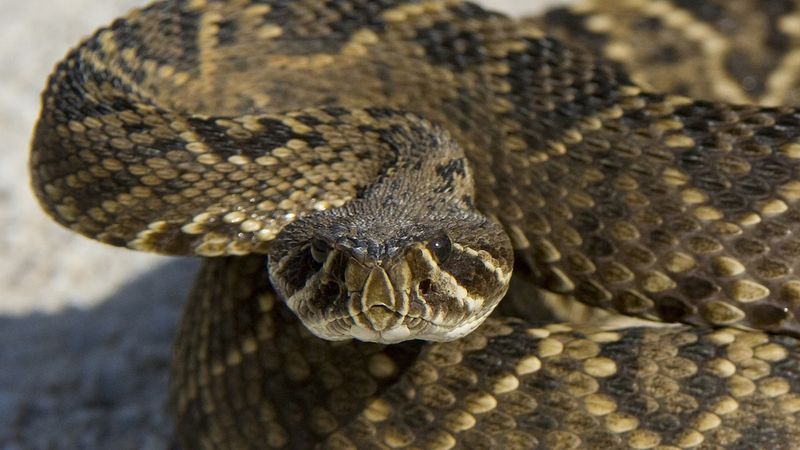
The Eastern Diamondback Rattlesnake is the largest rattler in the U.S., known for its distinctive diamond pattern. Its rattle serves as a warning to potential threats.
This snake inhabits the southeastern coastal plains, where it lies in wait for unsuspecting prey. While bites can be fatal, they are rare due to the snake’s preference for avoiding confrontation.
Fascinating fact: They can strike at a pace faster than a blink of an eye. Their impressive size and defensive rattle make them both intriguing and intimidating.
American Bison
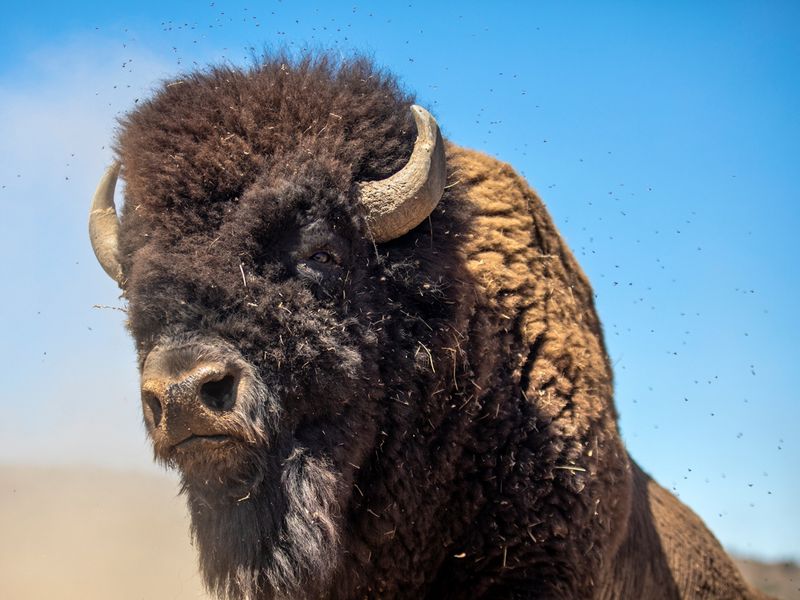
Roaming the plains, the American Bison is a symbol of strength and resilience. Despite their herbivorous diet, bison can be dangerous.
Weighing up to 2,000 pounds, they possess incredible speed and agility, capable of running 40 mph. These traits make them formidable, especially when threatened.
Fun fact: Bison were once nearly extinct but have made a remarkable comeback. Their presence in national parks is a testament to conservation success, yet caution is advised during encounters.
Mountain Lion
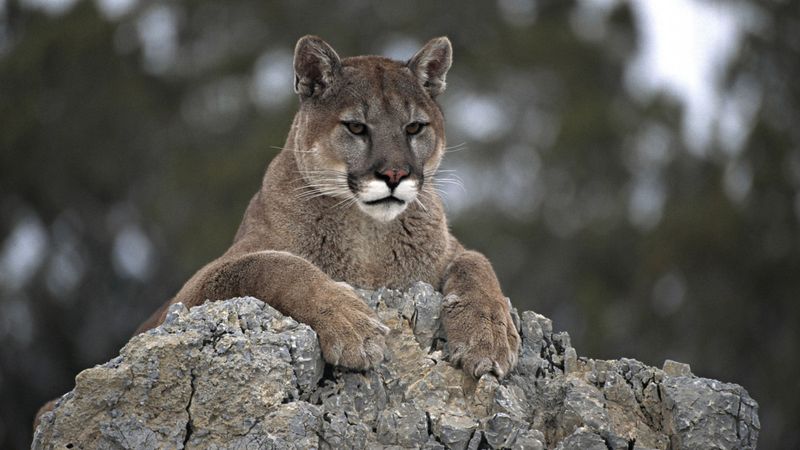
Stealthy and solitary, the Mountain Lion prowls the forests and mountains of the western U.S. Known also as cougars, they are expert hunters.
Their ability to leap 15 feet vertically is a testament to their athletic prowess. Though rare, attacks on humans can occur if the lion feels threatened or cornered.
Interesting tidbit: Mountain Lions communicate through chirps, whistles, and purrs. Their elusive nature and predatory skills underscore the need for vigilance in their habitats.
Western Diamondback Rattlesnake
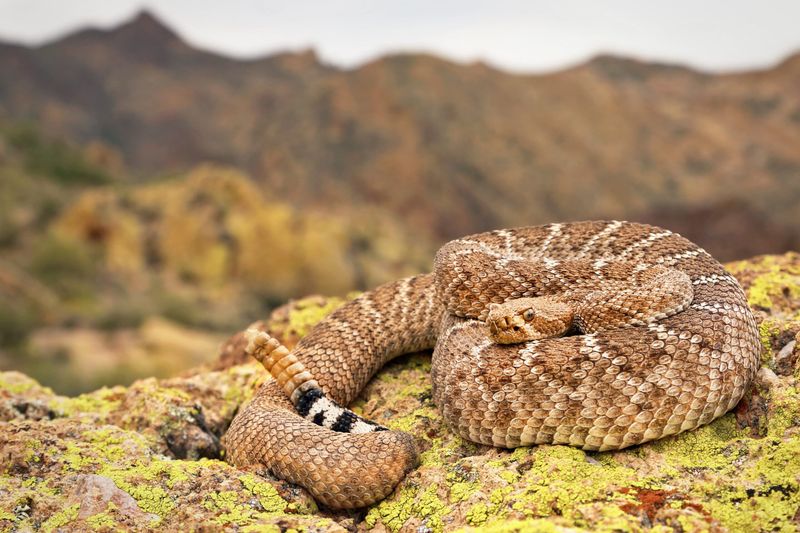
The Western Diamondback Rattlesnake is a prominent presence in the southwestern U.S., recognizable by its diamond-shaped patterns. Its rattle is an iconic sound of the desert.
A master of camouflage, it blends into rocky terrains, ready to defend itself when necessary. Though bites are dangerous, fatalities are uncommon with prompt treatment.
Did you know? They play a crucial role in controlling rodent populations. While fascinating, it’s wise to keep a respectful distance from these venomous snakes.
Bull Shark
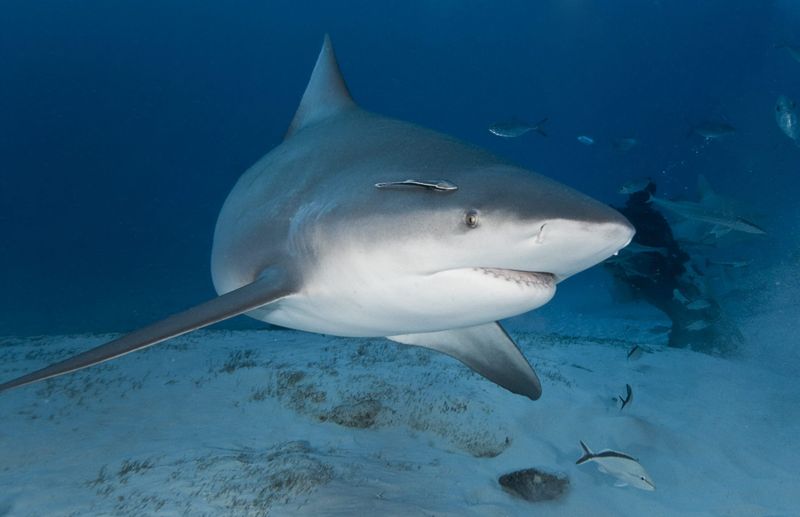
Known for their aggressive nature, Bull Sharks frequent U.S. coastal waters and even venture into rivers. Their adaptability makes them a formidable predator.
Unlike other sharks, they can tolerate freshwater, posing a threat in unexpected locations. Despite their fearsome reputation, attacks on humans are rare.
Curious fact: Bull Sharks have the highest testosterone levels of any animal, contributing to their aggressive behavior. Their unpredictability and strength make them both feared and respected in the water.
Texas Coral Snake
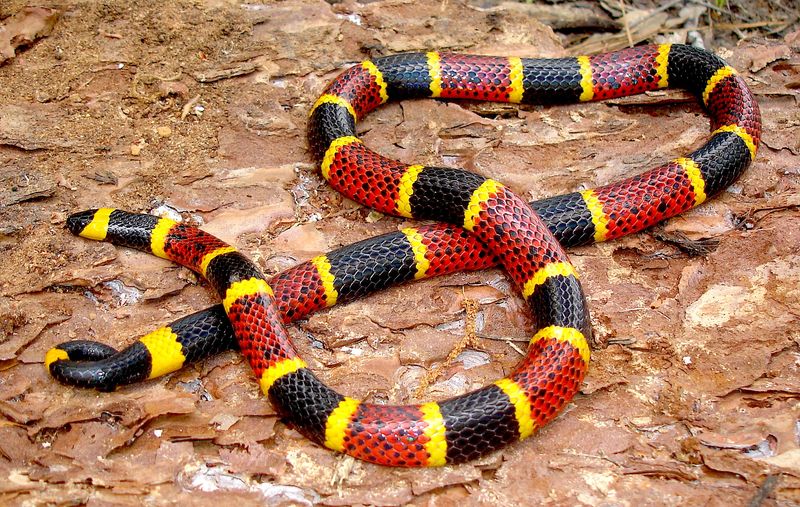
The Texas Coral Snake’s vibrant red, yellow, and black bands are a warning of its potent venom. Found in wooded and sandy areas of the southern U.S., its bite, while rare, can be life-threatening.
They are reclusive creatures, often hiding under logs or leaf litter. Their small fangs require a precise bite to deliver venom effectively.
Fun fact: A rhyme helps differentiate them from non-venomous mimics: “Red touch yellow, kill a fellow.” Their striking appearance is as captivating as it is cautionary.
Wolverine
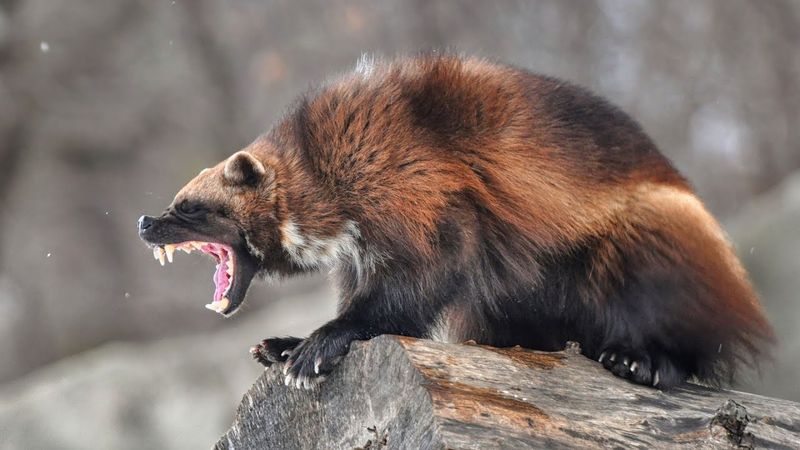
In the remote, rugged terrains of the northern U.S., the Wolverine is the ultimate survivalist. Known for their ferocity and strength, these creatures are solitary and elusive.
Often called the “glutton,” Wolverines have a voracious appetite, capable of taking down prey larger than themselves. Despite their size, they’re unafraid to challenge wolves or bears for food.
Did you know? Wolverines have a special tooth for crunching frozen meat and bones. Their tenacity and resilience make them a fascinating yet formidable presence.
Box Jellyfish

Floating silently beneath the warm Hawaiian waters, the Box Jellyfish presents a paradox of beauty and danger. Its almost invisible presence in the ocean can lead to unexpected and painful encounters for unsuspecting swimmers.
The Box Jellyfish’s tentacles are equipped with venomous cells that can cause excruciating pain and, in severe cases, cardiac arrest. Known for their lethal sting, these jellyfish are best admired from a distance.
A fascinating fact is that the Box Jellyfish has 24 eyes, allowing it to navigate the ocean with surprising precision.
Coyote
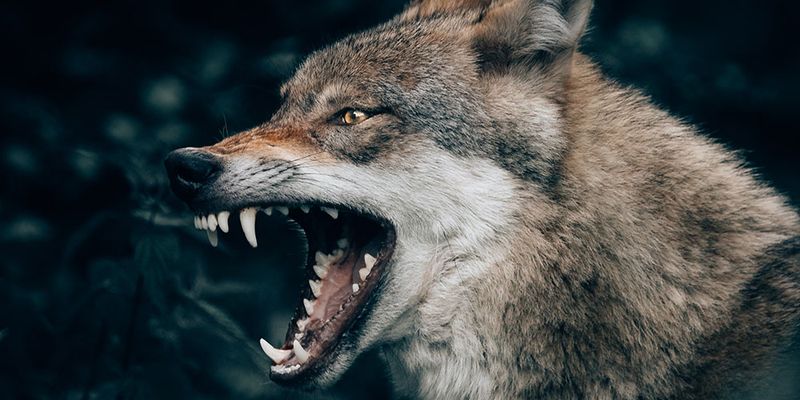
The adaptable Coyote is found throughout the U.S., from urban areas to remote deserts. Known for their distinctive howl, they are intelligent and resourceful scavengers.
Coyotes pose little threat to humans but can be bold, especially if habituated to human food sources. They play an essential role in the ecosystem, controlling rodent populations.
Did you know? Coyotes are capable of adapting their diet to whatever is available, showcasing their remarkable resilience. Their presence is a reminder of nature’s adaptability and balance.
Great White Shark
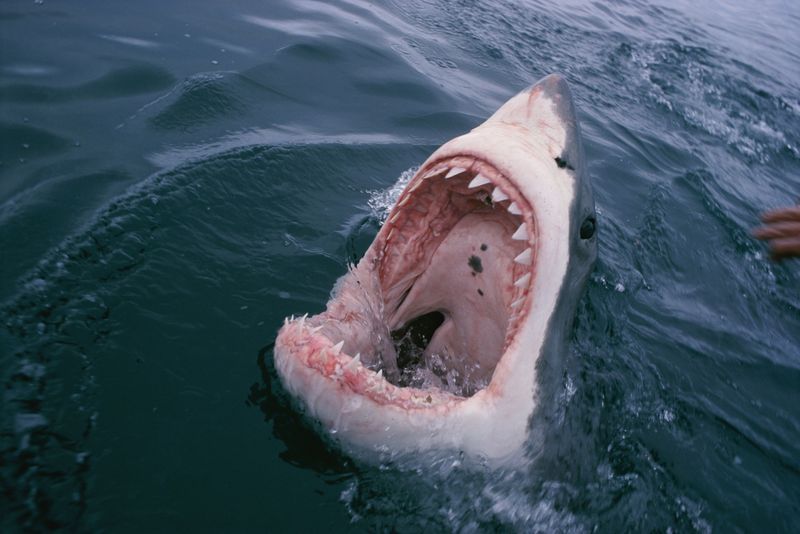
As the apex predator of the sea, the Great White Shark inspires both awe and fear. Found in U.S. coastal waters, they are known for their size and strength.
Great Whites are curious creatures, often investigating unfamiliar objects with their teeth. Despite their reputation, attacks on humans are rare, as they prefer seals and fish.
Fascinating fact: Great Whites can detect a single drop of blood in 25 gallons of water. Their impressive hunting skills and power make them the ocean’s most iconic predator.
Bobcat

The Bobcat, with its tufted ears and short tail, is a stealthy predator in the U.S. landscape. Thriving across diverse environments, they are adaptable hunters.
Bobcats are solitary, primarily hunting at dawn and dusk. Their diet includes rabbits, birds, and small rodents. While not a direct threat to humans, they are fiercely territorial.
Did you know? Bobcats are skilled climbers, often resting in trees. Their elusive nature and adaptability showcase the subtle balance of the natural world.
Gila Monster
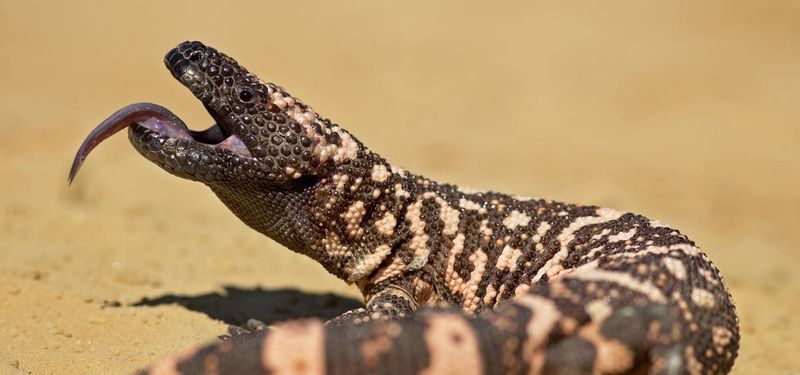
The Gila Monster, with its striking orange and black scales, is one of the few venomous lizards in the world. Native to the southwestern U.S., it’s a creature of mystery.
Despite their slow movement, they deliver a powerful bite, using grooved teeth to inject venom. Encounters are rare due to their reclusive and nocturnal nature.
Curious note: Gila Monsters can go months without food, storing fat in their tails. Their unique adaptations make them a fascinating part of desert wildlife.
Moose
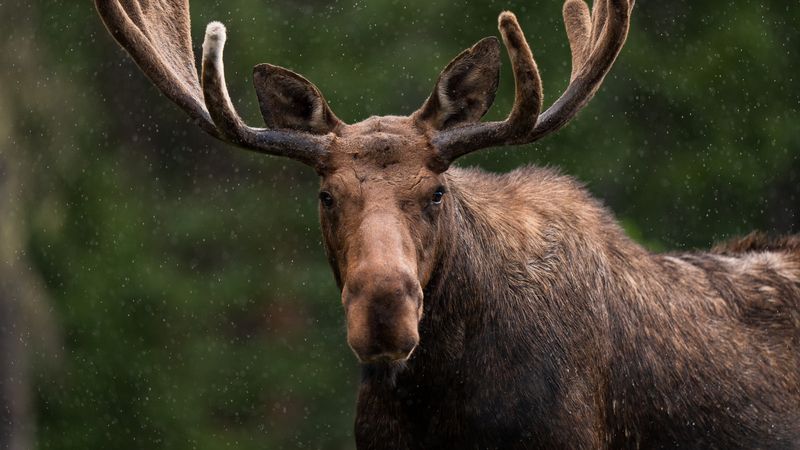
Towering and majestic, the Moose is a giant of the northern U.S. wilderness. Despite their herbivorous diet, they can be highly aggressive if provoked.
Moose are excellent swimmers, often seen in lakes and rivers. Their size and strength are unmatched, with antlers spanning six feet.
Interesting tidbit: Moose have a flap of skin known as a “bell” hanging from their necks. Their imposing presence and unpredictable behavior make them both fascinating and formidable.

